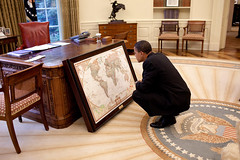Sara K. Smith teaches us some Argentinian geography as inspired by South Carolina's Governor Sanford: "Sanford Taught Us All a Valuable Lesson in Geography."
And I had no idea. I have a rough visual picture of the geography of South America, where the plains are, and the glaciers, and the rain forests, and plateaus, and high Andes, and the Pampas. But I'd never even thought of the coast of Argentina, and whether it is accessible, whether it has a long coast road like California's, or is developed like the French Riviera, or is broken up and swampy like Louisiana's, or an open estuary like South Australia's Coorong, or a series of sand bars and barrier islands like South Carolina.
Now I know a little more, and of course, must read up a bit. I am fascinated.
Too Good to Go - Food Waste app
15 hours ago





